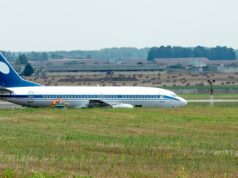
Data mining the operation, Part 1 of 5
In 1908, the Wright Brothers were working to secure flight-training contracts and sell their Wright Flyer to the U.S. Army Signal Corps. The U.S. Army Air Corps (AAC) did not exist yet and it would be forty more years and two world wars before the AAC would morph into the U.S. Air Force. The U.S. military at this time did not view the new-fangled air machines as having any practical war-fighting capability beyond acting as airborne signaling and reconnaissance platforms. This was why, on September 17, Orville Wright and Lieutenant Thomas Selfridge of the U.S. Army Signal Corps were completing a demonstration flight at Fort Myer, Virginia. Tragically, Orville lost control of the aircraft and crashed. Orville was injured, but Lt. Selfridge become the first fatality in an airplane accident.
Since then, aviation has evolved to become the safest form of transportation, developing along the way measures such as checklists and safety-auditing protocols that have become, not only standard in aviation operations, but have also been emulated by many other industries. In this series, we will take a high-level look at safety data-reporting systems in the airline industry and the information and value each provides in maintaining and enhancing operational safety.
In this first installment, we are looking at the principal level of data collection used to review and enhance aviation operations – mandatory safety reports. Most pilots become familiar with these during primary training. You are required to report anything you see or do that is unsafe or could have caused an unsafe condition. In airline operations, this type of reporting continues, and is based on similar criteria (as well as the occurrence of an incident or accident – the definition distinguished by the loss of life and/or property in the latter). As such, the requirement to report an erosion or loss of safety to a government or law enforcement agency and/or the airline itself is required. In the U.S., this usually means the FAA or National Transportation Safety Board – again, something new flight students become familiar with under reporting requirements for NTSB 830.
Airlines are obliged to report certain occurrences to the authorities, and in turn, require pilots involved in specific events to provide the associated operational information. Typically, a report is completed and submitted via the company’s intranet site and is often referred to as an irregular operation report (or a similarly named form). The company’s flight-operations manual usually outlines the types of events for which a pilot must submit an “irreg report” as a method of providing this frontline information to the company. Airlines not only use this information for their own reporting to federal agencies, but also to track a multitude of operational events from go-arounds to tail strikes, looking for patterns (versus one-off events) that need to be addressed. In other words, they monitor for actionable trends within the data to make positive, safety-enhancing changes – be it in a checklist, training, company communication, or other processes or procedures.
Next month, we will consider voluntary reports (as opposed to the required reporting addressed above) that are optional (though highly encouraged) that pilots, dispatchers, mechanics, controllers, and others involved in aviation operations complete when things go wrong or hazards are observed.



















































